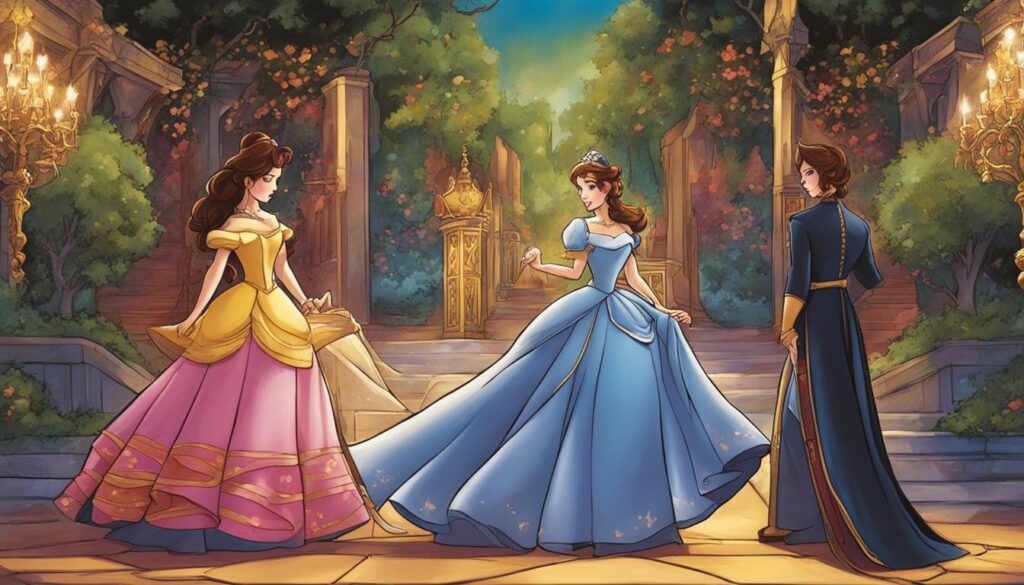Looking for a captivating young adult romantic novel? Look no further than Princess in Love, the third book in the best-selling series, The Princess Diaries by Meg Cabot. This installment follows the journey of Princess Mia Thermopolis as she deals with her royal responsibilities, teenage romance, and personal growth. In this article, we will delve into the book’s summary, the background of Meg Cabot’s book series, The Princess Diaries, and the significance of this particular installment within the series.
About the Author, Meg Cabot
Meg Cabot, born in Bloomington, Indiana, in 1967, is a highly acclaimed and bestselling author with over eighty published books to her credit. She is widely recognized for her young adult fiction that has captured the hearts of readers all over the world. Her love for storytelling began at an early age, with her interest in writing stemming from her work as a freshman in a class taught by novelist Elinor Lipman. Cabot graduated from Indiana University in Bloomington before moving to New York City to pursue her writing career further.
With numerous accolades to her name, Meg Cabot is best known for her Princess Diaries book series, which served as the inspiration for the hit Disney films. The first book in the series was published in 2000, and it was an immediate success, gaining widespread popularity among young readers. Cabot is renowned for her ability to capture the complexities of romantic relationships and teenage identity in her writing, which has made her a household name in young adult fiction.
Cabot’s work has been translated into thirty-eight languages and has garnered numerous awards and nominations, including New York Times bestsellers and the coveted RITA Award. She has written numerous standalone novels, along with series such as The Mediator, 1-800-Where-R-You, and Allie Finkle’s Rules for Girls. Her latest novel, No Offense, was published by William Morrow in 2020.
Introducing The Princess Diaries Series
The Princess Diaries book series is a collection of young adult romance novels and coming-of-age stories written by bestselling author Meg Cabot. The series follows the life of a teenage girl named Mia Thermopolis, who suddenly discovers that she is the princess of the fictional kingdom of Genovia. The books explore Mia’s journey of self-discovery as she navigates high school, royal responsibilities, and teenage romance.
The Princess Diaries series has a broad target audience, with a focus on teenage girls and young adults. The books’ relatable characters and universal themes make them appealing to readers of all ages. The series is made up of eleven main installments, with several additional books and novellas exploring the supporting characters.
Previous books in the series include The Princess Diaries and Princess in the Spotlight. Each installment builds on the previous one, creating a cohesive and engaging story that keeps readers coming back for more.
The Storyline of Princess in Love
Princess Mia Thermopolis is back in action in the third installment of The Princess Diaries series, Princess in Love. As a newly crowned princess, Mia must navigate life as a teenager while balancing the demands of royal protocol, including tea with various foreign dignitaries. However, things become more complicated when she finds herself falling for one of her friends, Michael, and dealing with a love triangle involving an attractive and mysterious boy named J.P.
The novel is full of drama, both romantic and royal. Mia finds herself grappling with her feelings for Michael while trying to remain faithful to her duty as princess. Meanwhile, she must deal with the ongoing feud between her mother and grandmother, both of whom play significant roles in Mia’s life as well as in the monarchy. All the while, Mia is on a personal quest to discover her true identity as a teenager growing up in a world of privilege, responsibility, and never-ending expectations.

The royal drama in Princess in Love is at the heart of the book, as Mia is forced to confront the realities of her position and the far-reaching consequences of her decisions. At the same time, the novel is a coming-of-age story, exploring the complexities of teenage relationships, friendships, and self-discovery. Meg Cabot expertly weaves together these elements to create a book that is equal parts entertaining and thought-provoking.
Key Characters in Princess in Love
Princess in Love centers around several key characters, each with their own distinct personality and role in the story.
First and foremost is Princess Mia Thermopolis, the protagonist and heir to the throne of Genovia. Mia is a relatable character for young adult readers, struggling to balance her duties as a princess with a desire for a normal life.
Throughout the book, Mia encounters several love interests, including Michael Moscovitz, her long-time crush and friend, and Nicholas, a member of the Genovian royal family.
The supporting characters in Princess in Love are just as important to the story. Mia’s best friend, Lilly Moscovitz, provides both comedic relief and a sounding board for Mia to work through her problems.
The Genovian royal family also plays a significant role, with Mia’s Grandmère, Queen Clarisse, providing guidance and support while also creating tension and drama for the young princess.
Overall, the characters of Princess in Love are well-developed and add depth to the storyline, making it a memorable read within the series.
Themes Explored in Princess in Love
Meg Cabot’s Princess in Love delves into various themes that are common in her novels, focusing on self-discovery and teenage identity. As Princess Mia navigates the complexities of her royal responsibilities, she also begins to understand herself on a deeper level.
- Self-discovery: Throughout the book, Princess Mia works to understand who she is beyond her royal duties. She explores her interests and passions in order to gain a better understanding of her true self.
- Teenage identity: Princess Mia struggles with her identity as a teenage girl, attempting to balance her responsibilities as a princess with her desire to live a normal teenage life.
- Challenges of royalty: Princess Mia’s royal status often comes with challenging circumstances, such as navigating public perceptions and finding true love within the confines of her royal role.
Together, these themes make Princess in Love a relatable and poignant coming-of-age story that many readers can identify with.
Writing Style and Narrative Techniques
In Princess in Love, Meg Cabot’s writing style is characterized by the use of vivid descriptions, casual language, and a conversational tone. The narrative technique employed is first-person, allowing readers to see the story through the eyes of the protagonist, Princess Mia. This technique enables readers to empathize with Mia’s struggles and experiences in a more personal way.
The infusion of humor throughout the book is another technique used by Cabot to engage readers. Humor is intertwined with conflict and drama, creating a lighthearted yet meaningful story. The witty and clever humor makes the book entertaining to read while still addressing important themes and messages.
“But the thing is, I’m not sure I want to be a princess anymore. Well, I mean, I do. Because, you know, everyone wants to be a princess. But I don’t want to be one if it means I have to stop being myself.”
As demonstrated in this excerpt, Cabot’s use of humor adds depth to the character’s experiences, emphasizing the challenges of balancing personal identity and royal expectations. The skillful integration of humor highlights the story’s messages and themes without detracting from the plot’s dramatic conflicts.

Key Literary Techniques in Princess in Love:
| Literary Technique | Description |
|---|---|
| First-Person Narrative | Allows readers to have an intimate perspective of the protagonist’s experiences and emotions. |
| Humor | Used to engage readers and add depth to the conflict and drama in the story. |
| Descriptive Language | Used to create vivid imagery and immerse readers into the story’s setting. |
| Conversational Tone | Makes the story feel personal and relatable to readers. |
Overall, Cabot’s use of literary techniques in Princess in Love adds depth and meaning to the story, highlighting the challenges of teenage life and royalty. By using a first-person narrative, humor, and descriptive language, Cabot creates an entertaining and engaging book that resonates with readers.
Critical Reception and Popularity
Princess in Love, the third book in Meg Cabot’s The Princess Diaries series, has been widely acclaimed by book critics and readers alike. The book has received numerous positive reviews, with many praising the author’s ability to create believable characters and relatable themes.
“With its engaging storyline and well-developed characters, Princess in Love is a must-read for fans of young adult fiction.” – Booklist
Readers have also expressed their appreciation for the book, with many noting its ability to deliver a gripping story that leaves them wanting more. The book’s popularity is reflected in its bestselling status, with thousands of copies sold worldwide.
Notable Reviews
| Publication | Review |
|---|---|
| Kirkus Reviews | “Cabot’s Princess Diaries series is still smart, still feminist, still laugh-out-loud funny; we just needed a reminder of it.” |
| Publishers Weekly | “Cabot expertly navigates the murky waters of teen romances, balancing princess duties with teenage problems with humor and grace.” |
| The Guardian | “Full of witty, irreverent humor, Princess in Love is a refreshing take on the classic coming-of-age story.” |
Overall, Princess in Love has cemented its place as a beloved installment in The Princess Diaries series, captivating readers with its compelling storyline, relatable characters, and timeless themes.
Impact and Cultural Significance
Princess in Love has had a significant cultural impact on young adult literature. Through its relatable characters and themes, the book has resonated with readers worldwide, sparking widespread acclaim and interest.
The character of Princess Mia, in particular, has become an iconic figure in contemporary literature, inspiring young readers to embrace their individuality and celebrate their unique qualities. As a result, Princess in Love has helped to shape the modern landscape of young adult literature, contributing to a new wave of empowering stories that emphasize self-discovery, identity, and personal growth.
Moreover, Princess in Love has successfully bridged the gap between traditional royal narratives and teenage romance, attracting a broader audience to young adult literature. This unique blend of genres paved the way for new and exciting forms of storytelling, encouraging writers to explore diverse themes and topics.
The cultural impact of Princess in Love can be seen in its numerous adaptations and references in pop culture, including film and television adaptations, merchandise, and fan art. These are a testament to the lasting impression this book has made on its audience and the significance it holds in the world of young adult literature.
Conclusion
Princess in Love, the third installment in Meg Cabot’s The Princess Diaries series, offers readers a well-crafted story filled with teenage drama and romance. The captivating characters and relatable themes make it appealing to young adults, and Cabot’s writing style and narrative techniques keep readers engaged throughout the book.
Princess Mia Thermopolis’s journey of self-discovery and her challenges as royalty are conveyed through humor and first-person narrative, making it an easy and enjoyable read. The critical reception and popularity of the book, along with its cultural significance in the realm of young adult literature, cement its place as a timeless classic.
Overall, Princess in Love is a charming addition to Meg Cabot’s series, with a storyline that will touch the hearts of many readers. Its relatable characters and themes provide a meaningful takeaway, making it a must-read for young adults seeking an entertaining and thought-provoking book.



